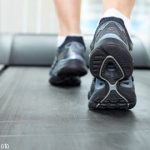Introduction & Objectives
Although the etiology of rheumatoid arthritis (RA) is not fully elucidated, there has been substantial progress in identifying potentially modifiable risk factors. Metabolic risk factors, such as elevated body mass index (BMI) and low-quality or proinflammatory dietary intake, are associated with increased RA risk, particularly a risk of seropositive RA. These factors may have important downstream biologic consequences because they can increase the severity of systemic inflammation, resulting in autoimmunity, which may, in turn, increase the susceptibility to RA.
Physical activity reduces the risk of numerous serious chronic conditions and also improves general well-being and physical function. Biologic effects on the immune system may include the reduction of inflammatory cytokines and regulation of cellular immune function. Increasing physical activity has been recommended to patients with RA, and some studies have suggested that physical activity may also reduce the risk of subsequent RA development.
Because RA causes limitations in physical activity through joint inflammation, studies evaluating physical activity and RA risk require careful design to ensure that any associations detected are not actually attributable to symptoms of early RA that could affect the level of physical activity; this effect is referred to as “reverse causation bias.” In addition, because long-term physical activity likely affects BMI, longitudinal studies incorporating repeated measures of physical activity, BMI and dietary intake are necessary to analyze these complex relationships with RA.
These researchers investigated long-term physical activity and RA risk using a large, prospective cohort study with long-term follow-up and repeated measures. They limited the potential for reverse causation bias by including a large time separation between the physical activity exposure measures and the window for RA case assessment. They hypothesized that increased levels of long-term physical activity would be associated with reduced RA risk, particularly the risk of seropositive RA. They further hypothesized that some of this association would be mediated by changes in BMI during follow-up.
Methods
This study investigated physical activity and RA risk among women from the Nurses’ Health Study II (1989–2015). Physical activity exposures and covariates were prospectively obtained using biennial questionnaires. Two rheumatologists independently reviewed the medical records of women who self-reported a new diagnosis of RA on biennial questionnaires and who screened positive for RA based on a supplemental survey. All incident RA cases met the 1987 ACR or 2010 ACR/European League Against Rheumatism (EULAR) classification criteria for RA.
The primary analysis investigated the long-term cumulative average number of hours spent in recreational physical activity two to eight years prior to the RA diagnosis, a time span chosen to reduce the potential for reverse causation bias, because early RA affects physical activity prior to diagnosis. Estimated Cox regression hazard ratios (HRs) with 95% confidence intervals (95% CIs) were used to assess the risk of RA serologic phenotypes (all, seropositive or seronegative) in relation to physical activity categories. The analyses were adjusted for body mass index (BMI) at age 18 years and time-varying potential confounders, and the mediating effect of updated BMI on the interaction between physical activity and RA risk was quantified.


